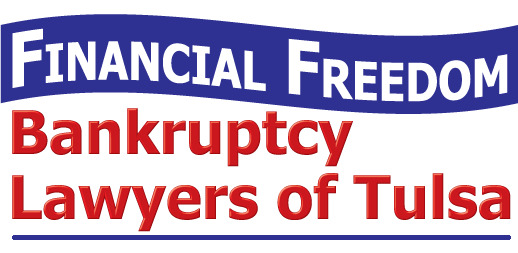Oklahoma Bankruptcy HelpMore Than Numbers: How Chapter 7 and 13 Bankruptcies Differ
 Bankruptcy is meant to erase the past and give debtors a fresh start. But just as individual debtors’ situations are different, bankruptcies are as well. For individuals, you have two basic choices: Chapter 7 filing for liquidation and discharge, and Chapter 13 filing for reorganization. Chapter differences between 7 and 13 can be important when deciding to file.
Bankruptcy is meant to erase the past and give debtors a fresh start. But just as individual debtors’ situations are different, bankruptcies are as well. For individuals, you have two basic choices: Chapter 7 filing for liquidation and discharge, and Chapter 13 filing for reorganization. Chapter differences between 7 and 13 can be important when deciding to file.
The key question creating chapter differences is whether the individual has any assets from which to pay creditors. The answer to this question may depend upon income, assets, the amount of money owed, and whether the debtor is seeking to retain any assets. The debt solution that is ideal for one family may not work well for another family, so checking in with a qualified Tulsa bankruptcy attorney is always a good idea.
Basic Chapter Differences
A Chapter 7 filing is a request to liquidate and discharge most of your pre-existing debts. This discharge prevents creditors from coming after you to collect the debts listed in the bankruptcy.
In a Chapter 7 discharge, the trustee divides your nonexempt assets among your creditors, and all remaining debt is then discharged. Nonexempt assets are those assets that can be sold. If you have some of these types of assets — a house or a boat, or the like — you risk losing them in a Chapter 7 bankruptcy. But most often, a person filing for Chapter 7 bankruptcy has little or no assets.
In order to file a Chapter 7 bankruptcy, you need to pass a means test. This means that your income must fall below a certain level for your family size in order to qualify for Chapter 7. If you cannot pass, you may either wait and attempt to pass the means test at a later point in time if your income and expenses change, or file for Chapter 13 relief.
On the other hand, Chapter 13 requests a partial debt repayment plan. This means that the court determines what can be paid back to creditors from the assets — including future income — over a period of time. At the end of the payment plan, any remaining debt will be discharged. A Chapter 13 petitioner must have some disposable income that can be applied toward the debt.
In a Chapter 13 case, you may reaffirm some debt in order to keep the assets secured by the debt. Most often, this is the family home. A Chapter 13 repayment plan may take three to five years to complete. During that time, you cannot open any new credit accounts without a judge’s permission.
In general, a Chapter 7 case appears on your credit report for 10 years, while a Chapter 13 filing appears for seven years.
Ineligible Debts
There are some debts that cannot be discharged in bankruptcy of any sort. Tax bills incurred less than three years ago, court fines, child support, alimony, and bills charged right before filing bankruptcy are ineligible for a court-ordered reduction or liquidation. Student loan debt is generally ineligible as well.
Low-cost Bankruptcy Planning: Tulsa Bankruptcy Lawyer
To get the best possible outcome in your bankruptcy case, you will need to set expectations for yourself and also understand your attorney’s expectations of you.
If you’re ready to file, contact a Tulsa bankruptcy attorney at the Freedom Financial Bankruptcy Lawyers of Tulsa as soon as possible.
To receive your low-cost initial bankruptcy analysis, call the Freedom Financial Bankruptcy Lawyers of Tulsa today at (918) 786-9600.
Tags: chapter 7 & 13 in Oklahoma, chapter differences between 7 and 13 bankruptcy in Oklahoma, Tulsa Oklahoma bankruptcy attorneys




